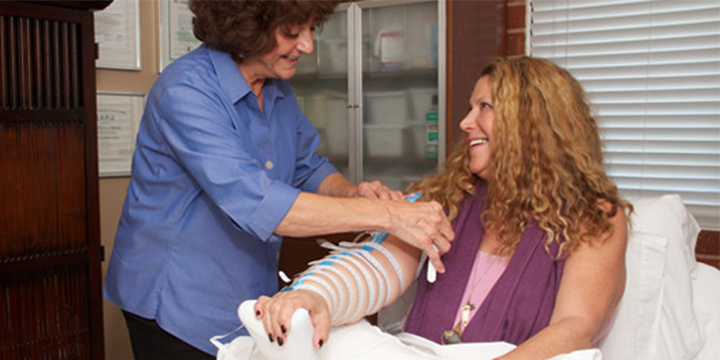Pain may signal that the cancer has multiplied or spread, an infection has started, or that the cancer treatment is causing problems. Because of this, you should report any new pain problems to your doctor or nurse before trying to relieve the pain on your own.
Non-medical treatments may be used to treat melanoma pain along with pain medicines. They might also be used singularly alone for mild pain or discomfort. Some patients find they can finally reduce their dose of pain medicine when they couple it with non-medical treatments.
Physical therapy for cancer patients
Cancer and its assortment of treatments are linked with a wide range of stressful physical and psychological symptoms, which can affect patients to a great extent. Workouts can improve the quality of life for cancer patients, in spite of the type and stage of their disease. Inclusion of physiotherapy-led exercise within cancer pathways can diminish and avert disability. Specialist physiotherapy can also alleviate distressing symptoms such as lympho edema and fatigue, which debilitates 75-95 per cent of all cancer patients. Mortality can be reduced by 50 per cent,40 per cent and 30 per cent in bowel, breast and prostate cancer respectively.In addition to this, disease progression was reduced by 57 per cent in men with prostate cancer who engaged in three hours a week of moderate intensity exercise.
Evidence shows that exercise reduces the risk of cancer recurrence and mortality. With the help of TriBeCa Care’s health professionals –physical therapists, psychologists, nurses, or others – one may experience immense pain relief.
Our healthcare professionals at TriBeCa Care teach you relaxation technique (to lessen tension, reduce anxiety, and manage pain) at the same time you take medicine. Try different methods to learn which ones work best for you. Be open-minded, and keep a record of what makes you feel better and what doesn’t help.
Excessive weight gain and loss can be a problem for many patients, depending on their treatment, stage and type of cancer. Specialist physiotherapists are vital for maintaining healthy weight and preventing muscle-wasting in cancer patients.
Exercising with cancer pain doesn’t have to be strenuous. In fact, simple exercises, such as walking, can be very beneficial in helping you manage cancer as well as cancer pain symptoms.
Physical therapy for cancer patients does the following:
- augments energy levels
- decreases fatigue
- helps you keep a healthy weight
- relieves stress
- strengthens muscles (especially important if you’ve lost muscle during cancer treatment)
At TriBeCa Care, our aim of physical therapy is to mitigate pain, increase range of activity and help reinstate muscle strength. Physical therapy will teach you to take good care of your body even after you leave the physical therapist’s office.
There are 2 types of physical therapy for cancer patients to help manage cancer pain: passive and active.
For passive treatments, our TriBeCa Care physical therapist does most of the work. Examples of passive treatments are heat and cold therapy and massage. Transcutaneous electrical nerve stimulation (TENS) is also another effective treatment, which is a small machine that sends electric currents to your nerves to help reduce your pain.
For active treatments, you do most of the work. An at-home exercise routine or taking an exercise class at your local gym are examples of active treatments. If you haven’t been active in a long time, physical therapy is a great way to start a regular exercise routine.
Work with TriBeCa Care physical therapist to develop a treatment plan customized to meet your needs. Your physical therapy plan will most likely include a combination of passive and active treatments, beginning with passive treatments so you’re more prepared for the active treatments.
If you need further help or advice, give us a call. TriBeCa Care is happy to be by your side. Request a callback or Call us at + 913366064208.
Email us at enquiry@newwpsite.tribecacare.com

